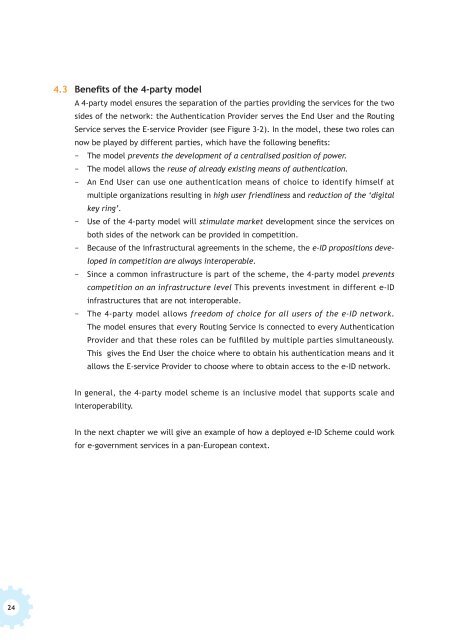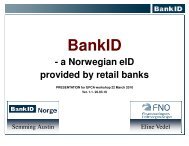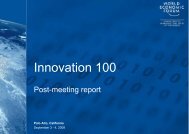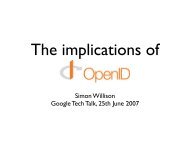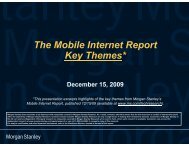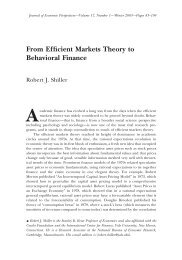A Network Approach to E-identification
A Network Approach to E-identification
A Network Approach to E-identification
- No tags were found...
You also want an ePaper? Increase the reach of your titles
YUMPU automatically turns print PDFs into web optimized ePapers that Google loves.
4.3 Benefits of the 4-party model<br />
A 4-party model ensures the separation of the parties providing the services for the two<br />
sides of the network: the Authentication Provider serves the End User and the Routing<br />
Service serves the E-service Provider (see Figure 3-2). In the model, these two roles can<br />
now be played by different parties, which have the following benefits:<br />
− The model prevents the development of a centralised position of power.<br />
− The model allows the reuse of already existing means of authentication.<br />
− An End User can use one authentication means of choice <strong>to</strong> identify himself at<br />
multiple organizations resulting in high user friendliness and reduction of the ‘digital<br />
key ring’.<br />
− Use of the 4-party model will stimulate market development since the services on<br />
both sides of the network can be provided in competition.<br />
− Because of the infrastructural agreements in the scheme, the e-ID propositions developed<br />
in competition are always interoperable.<br />
− Since a common infrastructure is part of the scheme, the 4-party model prevents<br />
competition on an infrastructure level This prevents investment in different e-ID<br />
infrastructures that are not interoperable.<br />
− The 4-party model allows freedom of choice for all users of the e-ID network.<br />
The model ensures that every Routing Service is connected <strong>to</strong> every Authentication<br />
Provider and that these roles can be fulfilled by multiple parties simultaneously.<br />
This gives the End User the choice where <strong>to</strong> obtain his authentication means and it<br />
allows the E-service Provider <strong>to</strong> choose where <strong>to</strong> obtain access <strong>to</strong> the e-ID network.<br />
In general, the 4-party model scheme is an inclusive model that supports scale and<br />
interoperability.<br />
In the next chapter we will give an example of how a deployed e-ID Scheme could work<br />
for e-government services in a pan-European context.<br />
24


